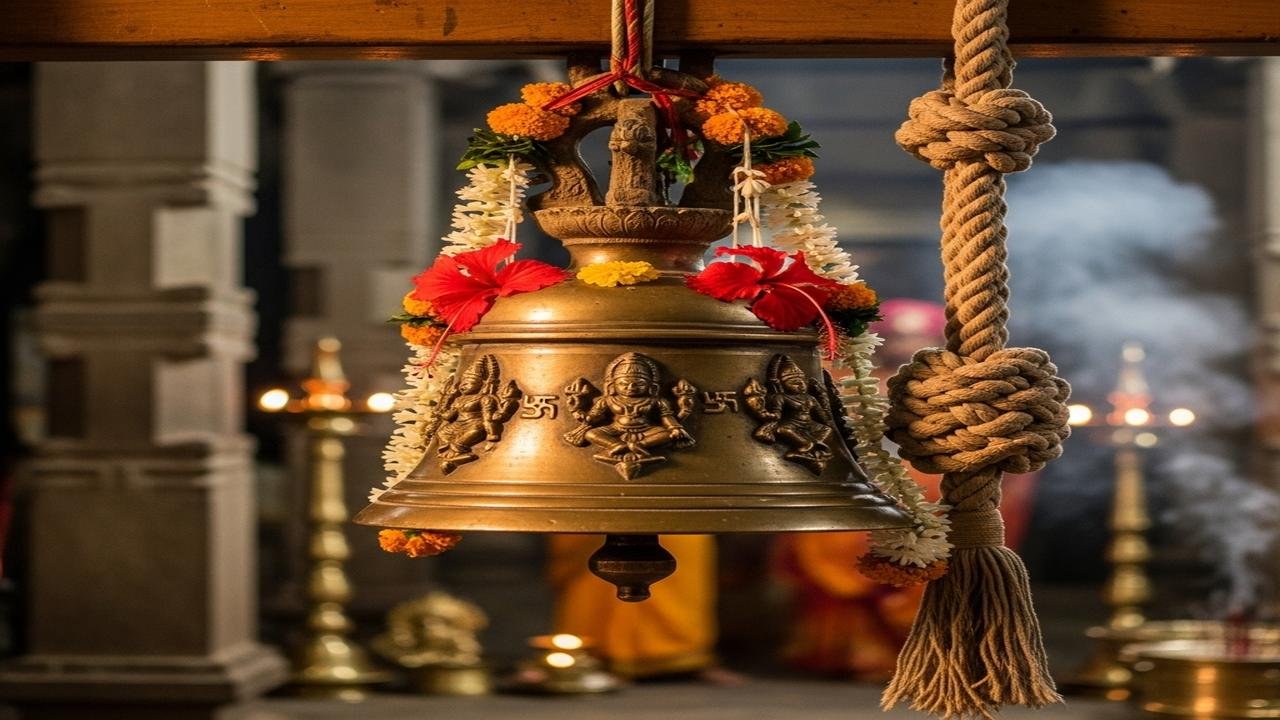Why Hindus Ring the Temple Bell, the Sacred Call of Om

Why Do Hindus Ring the Bell Before Entering a Temple?
Picture this: you step into a quiet temple courtyard, the air smells of incense, and a soft breeze brushes your face. Just before crossing the threshold, your fingers reach for the bell. With a gentle pull, a clear, bright sound spreads through the space. In that moment, your heart settles. You feel ready to meet the Divine. This simple act—ringing the temple bell—carries deep meaning in Hindu tradition.
In many homes and temples, the bell is called the ghanti. Our elders teach us that its sound is not just noise; it is a call. It invites the deity’s presence into our awareness and reminds the mind to leave worries at the door. For generations, devotees have rung the bell before darshan and during aarti, creating a sacred rhythm that prepares the heart for prayer.
What does the temple bell symbolize?
- Invoking the Divine: The bell’s first purpose is to invite sacred presence. It is like knocking before entering a holy room, a respectful way to say, “I have come, please accept my worship.”
- Silencing inner chatter: The clear tone cuts through mental noise. As the bell resonates, the mind naturally pauses, and restless thoughts slow down, making space for devotion.
- Purifying the environment: According to tradition, auspicious sound drives away negativity and sets a pure, sacred mood. Devotees believe the vibration uplifts the atmosphere and the heart.
- Uniting with Om: The lingering ring often echoes like Om, the primordial sound. It reminds us that worship is not only ritual—it is a return to the inner source.
- Engaging the senses: Hindu worship uses sight, sound, fragrance, and touch. The bell brings the sense of hearing into prayer, helping us stay fully present before the deity.
History and sacred craft
Walk into ancient temples and you will find bells hanging at the entrance and near the sanctum. Over time, artisans shaped bells with great care, often using mixed metals. Many sacred objects in Hinduism are made from combinations of metals linked symbolically to the five elements. The bell’s design, thickness, and curve are crafted to create a long, steady ring that fills the halls and touches the heart.
Practice in daily worship
Before stepping into a shrine, devotees ring the bell to mark the beginning of worship. During aarti, the bell is rung rhythmically along with conch, cymbals, and chants. This collective sound invites everyone to focus together. Even at home, a small bell is rung during morning or evening puja. It becomes a family reminder: prayer time has begun; let us be present and grateful.
Meaning for modern life
In our busy world, the temple bell is a gentle teacher. It shows us how to shift from hurry to humility. One clear note can become a mindful pause before we speak, decide, or pray. Parents can share this practice with children—letting them ring the bell softly, teaching them to enter sacred spaces with respect and attention. The bell becomes a bridge between tradition and today, reminding us that spirituality can be both simple and deep.
How to ring the bell with devotion
- Stand still for a moment and breathe calmly.
- Ring the bell gently—enough to let the sound flow, not to create harsh noise.
- Hold a silent prayer: “May my mind be steady; may my worship be pure.”
Conclusion
Ringing the temple bell is more than a ritual—it is a doorway. It invites the Divine, quiets the mind, purifies the space, and tunes our hearts to Om. Whether in a grand temple or a small home shrine, that single, clear sound reminds us to arrive fully—body, breath, and soul. As you next reach for the bell, pause and listen to its echo within. Let it carry your worries away and your prayer forward. In that simple ring, may you hear a gentle message: you are in the presence of the sacred; be still, be grateful, be light.
